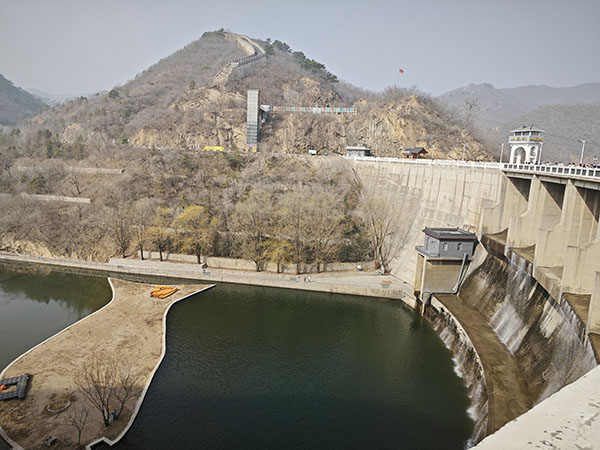中国科学院大气物理研究所大气科学和地球流体力学数值模拟国家重点实验室
State Key Laboratory of Numerical Modeling for Atmospheric Sciences and
Geophysical Fluid Dynamics (LASG)
Institute of Atmospheric Physics, Chinese Academy of Sciences
State Key Laboratory of Numerical Modeling for Atmospheric Sciences and
Geophysical Fluid Dynamics (LASG)
Institute of Atmospheric Physics, Chinese Academy of Sciences

Vol.19/No.19 December 2023
ESD: Revealing the Role of Anthropogenic Water Regulation in Shaping Riverine Dissolved Organic Carbon Fluxes

Reservoir on the river. Riverine dissolved organic carbon is one of the carbon species transported in rivers. (Image by YOU Yanbin)
A collaborative research team led by the Institute of Atmospheric Physics at the Chinese Academy of Sciences has made significant strides in this area by developing innovative models that account for both soil and riverine DOC dynamics, as well as the influence of anthropogenic water regulation activities. These models have been successfully integrated into the land surface model CLM5.0.
PhD candidate YOU Yanbin from the Institute of Atmospheric Physics at the Chinese Academy of Sciences, the first author of the study, explains, "We conducted three sets of numerical simulations from 1981 to 2013 on a global scale using our developed model to investigate the effects of anthropogenic water regulation on riverine DOC transport."
The findings of this research indicate that, in the majority of cases, the transport of DOC in rivers is predominantly influenced by surface water regulation. Professor XIE Zhenghui notes, "The influence of human water regulation on riverine DOC exports has exhibited a steady increase over the years."
In addition, the most significant impact of anthropogenic water regulation activities has been concentrated within the region spanning from 23.5°N to 66°N, owing to its pronounced prevalence of human water usage.
Professor JIA Binghao adds, "Our innovative scheme for simulating DOC exports from terrestrial to aquatic systems is pivotal in accurately estimating global carbon budgets."
This work has been published in Earth System Dynamics.
Citation: You, Y., Xie, Z., Jia, B., Wang, Y., Wang, L., Li, R., Yan, H., Tian, Y., and Chen, S.: Impacts of anthropogenic water regulation on global riverine dissolved organic carbon transport, Earth Syst. Dynam., 14, 897–914, https://doi.org/10.5194/esd-14-897-2023, 2023.
Link:https://esd.copernicus.org/articles/14/897/2023/
Contact:XIE Zhenghui,zxie@lasg.iap.ac.cn;JIA Binghao, bhjia@mail.iap.ac.cn
Add: No.40, Huayanli, Beichen West Road, Chaoyang District, Beijing P.O. Box 9804, 100029, China
E-mail: lasg_newsletter@lasg.iap.ac.cn
Editors: Chuanyi Wang (wangcy@lasg.iap.ac.cn), Kangjun Chen(ckj@lasg.iap.ac.cn)
E-mail: lasg_newsletter@lasg.iap.ac.cn
Editors: Chuanyi Wang (wangcy@lasg.iap.ac.cn), Kangjun Chen(ckj@lasg.iap.ac.cn)